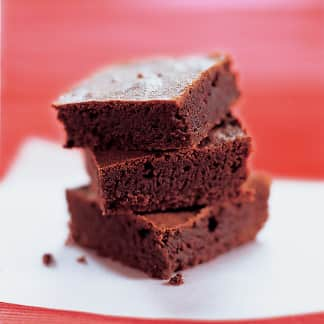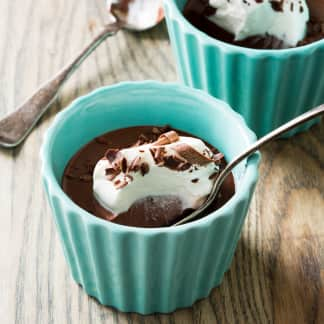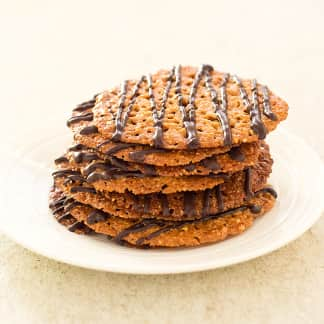Reviews You Can Trust.
See Why.
Dark Chocolate
It’s easy to find a great snacking chocolate. But cooking is different: Choosing the right dark chocolate can make the difference between a dessert that’s flawless and one that’s a flop.
Top Pick

WinnerGhirardelli 60% Cacao Bittersweet Chocolate Premium Baking Bar
Sign up for the Well-Equipped Cook newsletter
Shop smarter with our ATK Reviews team's expert guides and recommendations.
What You Need to Know
In the past decade, Americans have gotten serious about dark chocolate. Rich, complex, and even bitter, its flavor transcends the mild, sugar-laden milk chocolate that many of us grew up with. As a result, ever-climbing cacao percentages are now posted prominently on packaging, and chocophiles have come to describe bars with the same level of detail that they’d use for a fine Cabernet. “Bean to bar” is hot, as artisanal chocolatiers take control of every aspect of chocolate making, from sourcing to production. Single-origin bars are trendy, too, showcasing distinct regional characteristics such as the intensely floral flavor of beans from the mountains of Peru or the dried mint overtones of bars made from the beans from Trinidad.
But almost all these pricey chocolates are meant to be eaten plain, savored by the sliver, rather than used for cooking. It seems wasteful to cook with them, as many of their more delicate notes won’t survive a hot oven. (You know that unmistakable fragrance that pervades the kitchen when you’re baking chocolate cake or brownies? Those are flavor and aroma volatiles driven out of the baked goods by the heat.)
To find a great everyday dark chocolate, we focused on national supermarket brands; after all, we want to be able to pick some up whenever the need for a brownie strikes. The U.S. Food and Drug Administration (FDA) doesn’t set a standard of identity for dark chocolate except that “bittersweet” and “semisweet” chocolate must contain at least 35 percent cacao—and it doesn’t differentiate between the two terms. (The cacao percentage is the portion of the chocolate made from the cacao bean and includes both cocoa solids and cocoa butter; the rest is mostly sugar.) In the past we’ve focused on products with about 60 percent cacao, but this time, to truly evaluate all the supermarket options, if it met the FDA’s 35 percent cacao minimum, we considered it for our lineup. We found nine nationally available chocolates, priced from $0.47 to $1.43 per ounce, and included our winner from a previous tasting, which is available in most Whole Foods Markets and via mail order.
We conducted three blind taste tests, evaluating the chocolates’ flavor, sweetness, texture, and overall appeal. We sampled them plain and also in brownies to see how well the chocolate flavor endured heat. Finally we melted them in pots de crème—a creamy application where textural differences are laid bare. After the results were tallied, we had to ask: Was there such a thing as a great-tasting, easy-to-find dark chocolate that works well in recipes? Happily, yes. But buyer beware: It’s stacked on supermarket shelves right next to products that can ruin a dessert.
The Dark Side
Dark chocolate is made of three primary ingredients: cocoa butter, cocoa solids, and sugar. Across the board in the chocolates we tasted, we determined that fat levels were relatively consistent, with cocoa butter making up about one-third of the total composition of each chocolate; the remaining two-thirds is a tug-of-war between sugar and cocoa solids—more sugar means fewer cocoa solids and vice versa. Sugar amounts ranged from 36 to 57 percent; in the plain and brownie tastings, products with more than 50 percent sugar sank to the bottom of the ratings, coming off as “sickeningly sweet,” with a “faint” chocolate presence. In the same tastings, we weren’t surprised to find that low-sugar, high-cocoa-solids products rocketed to the top, scoring points for intense chocolate flavor.
But it wasn’t until we made pots de crème that we realized that the wrong ratio of sugar to cocoa solids could actually ruin a recipe: Our 10 custards—each made exactly the same except for the chocolate that we used—ran the gamut from loose and drippy to dense and decadently creamy. Previous tastings taught us that more cocoa solids make firmer pots de crème, and in this lineup the solids ranged from 13 to 30 percent. Indeed, when we organized our pots de crème from runniest to firmest, we noted that those made with products with less than 20 percent cocoa solids failed to set up, dripping off our spoons. Chocolates with 22 to 25 percent cocoa solids hit the sweet spot, turning out consistently dense and creamy. At the extreme, the two products with the most cocoa solids, sometimes caused the custard to break and turn clumpy, a result of cocoa particles bonding with themselves instead of with the limited amount of free water in the mix. But thanks to the natural variability of water in eggs and even minor differences in heat and stirring rates, clumping didn’t always happen.
Bar Brawl
In the end, two 60-percent-cacao chocolates that we’ve singled out in the past topped our charts, but they weren’t identical: Tasters raved about one, calling it “complex” and “luxurious.” Its downside is that it can be a little hard to source and is sometimes finicky in creamy applications. The second always produced texturally flawless desserts that were “luscious” and “subtly fruity”; plus it’s available in supermarkets nationwide. In addition, it is supremely easy to work with when it’s melted (such as when we are glazing a cake or tart) because it has the highest fat level of all 10 products. (More fat means better flow when the chocolate is melted, since fat creates a liquid base that transports the other ingredients.) The type of fat is important, too. Our supermarket favorite contains milk fat (along with cocoa butter); the other doesn’t. In fact, six of our 10 products add milk fat, an ingredient that has been used increasingly in recent years for its softening effect. Milk fat has a lower and wider melting range (85 to 94 degrees) than cocoa butter (90 to 93 degrees), so chocolates containing milk fat melt faster and stay liquid longer, giving a wider window of liquidity that can come in handy if you’re making, say, truffles or trying to smooth the top of a chocolate tart.
We ultimately chose our winning dark chocolate for its effortless performance across all applications and easy availability.
FAQs
Yes and no. We've got a whole article on the topic to explain.
America's Test KitchenWatch Now
Everything We Tested
Highly Recommended

WinnerGhirardelli 60% Cacao Bittersweet Chocolate Premium Baking Bar

Callebaut Intense Dark Chocolate, L-60-40NV
Recommended
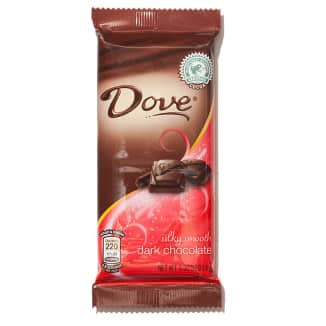
Dove Silky Smooth Dark Chocolate

Scharffen Berger Semisweet Fine Artisan Dark Chocolate
Recommended with reservations

Baker’s Bittersweet Baking Chocolate Squares

Baker’s Semi-Sweet Baking Chocolate Squares

Ghirardelli Semi-Sweet Chocolate Premium Baking Bar
Not Recommended
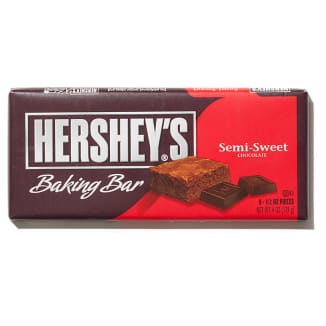
Hershey’s Semi-Sweet Chocolate Baking Bar

Hershey’s Special Dark Chocolate Bar

Nestlé Semi-Sweet Baking Chocolate Bar
*All products reviewed by America’s Test Kitchen are independently chosen, researched, and reviewed by our editors. We buy products for testing at retail locations and do not accept unsolicited samples for testing. We list suggested sources for recommended products as a convenience to our readers but do not endorse specific retailers. When you choose to purchase our editorial recommendations from the links we provide, we may earn an affiliate commission. Prices are subject to change.
Reviews You Can Trust
The mission of America’s Test Kitchen Reviews is to find the best equipment and ingredients for the home cook through rigorous, hands-on testing. Have a question or suggestion? Send us an email at atkreviews@americastestkitchen.com. We appreciate your feedback!
Reviews You Can Trust.
See Why.

